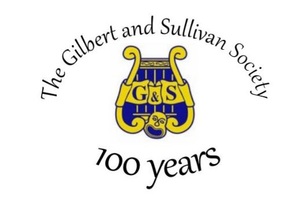Dramatist William Schwenck Gilbert and composer Arthur Seymour Sullivan collaborated on fourteen comic operas between 1871 and 1896.
Their operas have been enjoyed across the world ever since.
Producer Richard D'Oyly Carte introduced the two to one another, and built the Savoy Theatre in 1881 to present the works which came to be known as the Savoy operas. He founded the D'Oyly Carte Opera Company, which performed and promoted Gilbert and Sullivan's works for over a century.
Sir William Schwenck Gilbert (1836 – 1911) was one of the most brilliant dramatists of Victorian England, a prolific journalist and humorous poet. A lawyer by training, he was responsible for the building of London's Garrick Theatre, and was knighted in 1907.
Gilbert once described Arthur Sullivan (1842 – 1900) as "incomparably the greatest English musician of the age." Besides contributing witty operatic parodies and a string of effervescent melodies to the Savoy operas, he wrote, amongst other works, cantatas, oratorios, concert overtures, incidental music to plays, numerous songs and a grand opera. He was knighted in 1883.
Their 25-year partnership began in 1871, when the pair were brought together by theatre manager Richard D’Oyly Carte. A hotelier, composer and theatre manager, Richard D’Oyly Carte was also a talent agent and comic-opera enthusiast. The ‘scheme of his life’, as he called it, was to make comic opera as popular in England as it was in France. It was this desire that led him to bring Gilbert and Sullivan together.
In 1881 Carte decided that he would open his own theatre to showcase the works of Gilbert and Sullivan, which led to some of their collaborations becoming known as the Savoy Operas.
When it was built, the Savoy Theatre was at the forefront of innovation. Carte and his manager, George Edwardes, introduced numbered seating, free programmes, and a no tipping policy for the cloakroom. Most impressively, the Savoy Theatre was the first public building in the world to be lit entirely by electricity. Thanks to this innovation, Gilbert and Sullivan’s Iolanthe was one of the first productions to use electricity in the staging.
Some of Gilbert’s fanciful storylines are based on real experiences
The story goes that when he was just 2 years old he was kidnapped by Italian bandits. His parents were on holiday in Naples when a couple of men approached the maid looking after baby Gilbert and demanded the child. For a small fortune of £25, his parents were able to retrieve their son.
Whether the tale is true or not, it had a profound effect on Gilbert’s story-telling: he created Ruth, the foolish nursery-maid from The Pirates of Penzance, and wrote The Gondoliers, which tells the story of the heir to the throne, who was kidnapped as a baby.
Sullivan was a successful composer in his own right. Aged 14, he was the first ever recipient of the Mendelssohn Scholarship, which allowed him to study at the Royal Academy of Music. His graduation piece, The Tempest, was so successful, Sullivan gained near celebrity status overnight.
He went on to write a ballet, a symphony, and a cello concerto, not to mention his one-act comic opera Cox and Box.
Early days
Gilbert and Sullivan’s first collaboration, Thespis, was conceived as a Christmas entertainment for John Hollingshead's Gaiety Theatre where it received its first performance on 26 December 1871 and ran for 63 performances. The gods on Mount Olympus are old and tired, so decide to leave their home and take a holiday. Meanwhile a troupe of travelling actors take their place.
Four years passed after Gilbert and Sullivan had created the 1871 Christmas entertainment Thespis, and each man became even more eminent in his field, but they did not have occasion to work together. Richard D'Oyly Carte, who was then acting for Selina Dolaro and her company in a season of light opera at the Royalty Theatre, asked the two men to collaborate on a short opera to be played as an after-piece to Offenbach's comic opera, La Périchole. On 25th March 1875 Trial by Jury opened at the Royalty Theatre, and the very witty, tuneful and "English" piece proved an immediate hit.
After the early and resounding success of this one-act opera in 1875, Gilbert and Sullivan, and their producer Richard D'Oyly Carte, decided to produce a full-length work. Gilbert expanded on one of his earlier writings based on a favourite operatic theme to create a plot about a magic love potion that would result in everyone falling in love with the wrong partner.
The Sorcerer was first produced at the Opéra Comique on the Strand, on November 17, 1877. The original run of the piece was a satisfactory 175 performances, enough of a success to encourage Gilbert and Sullivan to continue to collaborate, which led to their next piece, H.M.S. Pinafore.
